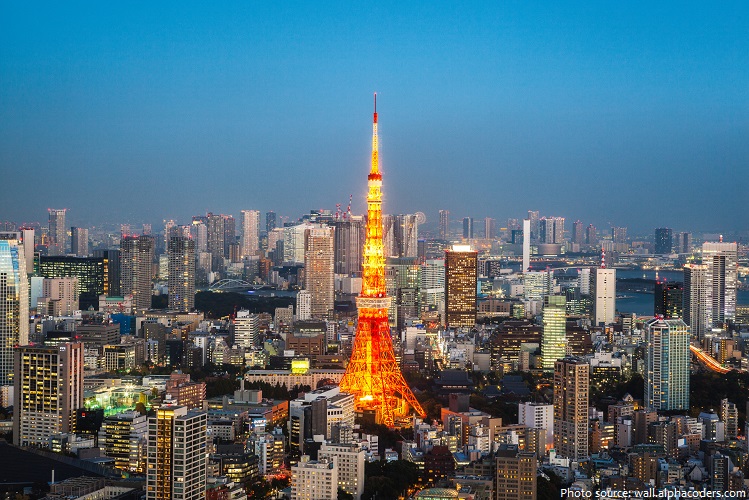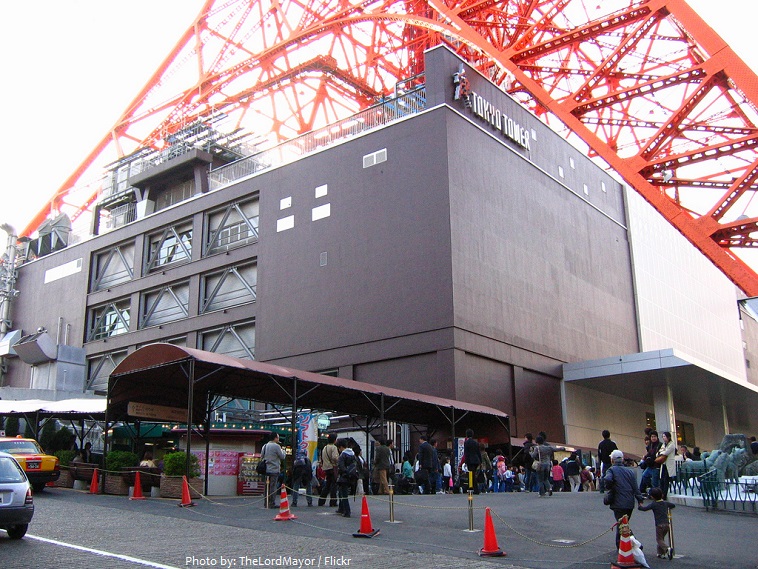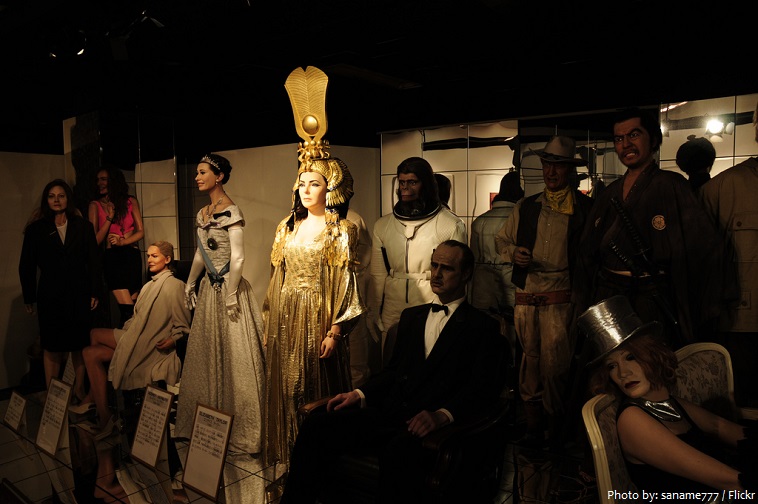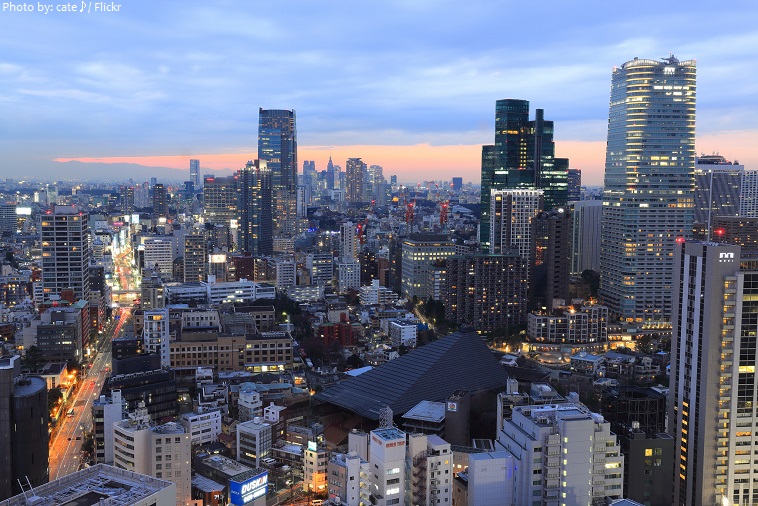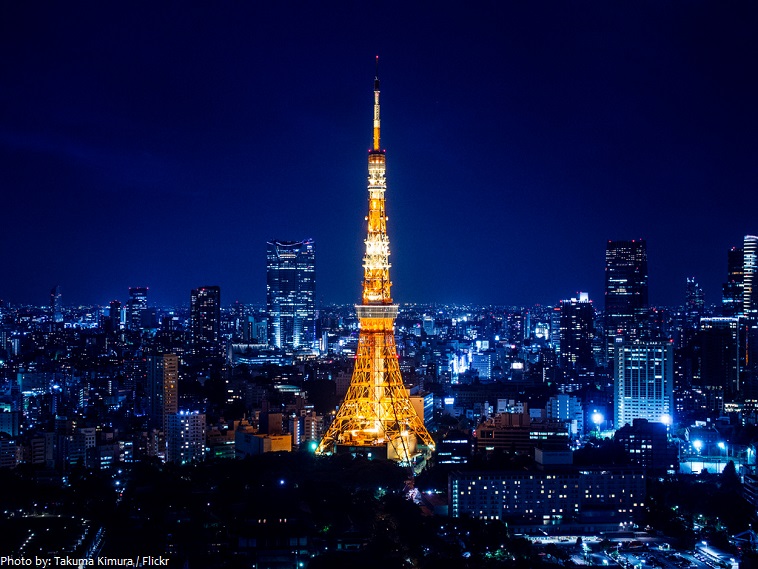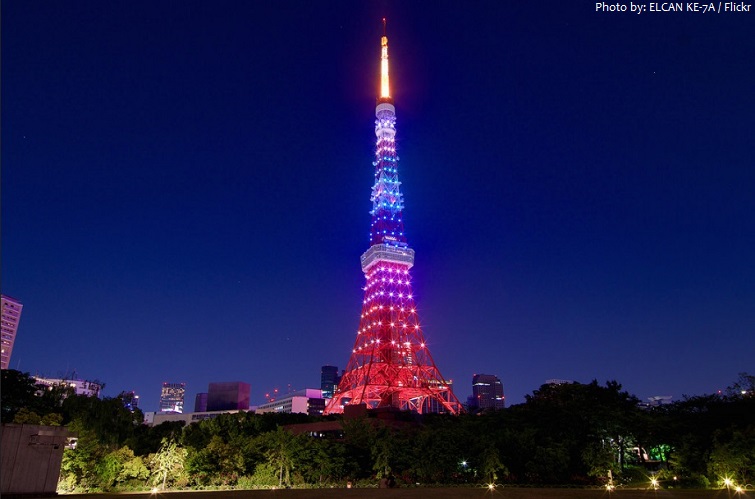Tokyo Tower is a communications and observation tower in Tokyo, Japan.
At 332.9 meters (1,092 feet), it is the second-tallest structure in Japan (after the Tokyo Skytree).
Tachū Naitō, renowned designer of tall buildings in Japan, was chosen to design the newly proposed tower. Looking to the Western world for inspiration, Naitō based his design on the Eiffel Tower in Paris, France.
When the 90-meter (295-foot) antenna was bolted into place on 14 October 1958, Tokyo Tower was the tallest freestanding tower in the world, taking the title from the Eiffel Tower by 13 meters.
It was opened to the public on 23 December 1958 at a final cost of ¥2.8 billion ($8.4 million in 1958).
Made of prefabricated steel, Tokyo Tower is called light because it weighs only 4,000 metric tons. Although Tokyo Tower is taller than the Eiffel Tower, the advances in steel technology make it almost 1/2 its weight.
It is painted white and international orange to comply with air safety regulations.
The two main purposes of the tower is broadcasting and tourism.
It controls broadcast signals for television, FM radio transmission and reception, and traffic information transmission in the Tokyo metropolitan area. The tower is also used for collecting weather and air pollution data.
Located in the base of the tower is a 4-story building known as FootTown. The first floor includes the Aquarium Gallery, a reception hall, the 400-person-capacity “Tower Restaurant”, a FamilyMart convenience store and a souvenir shop.
The third floor is home to the Guinness World Records Museum Tokyo, a museum that houses life-size figures, photo panels and memorabilia depicting interesting records that have been authenticated by the Guinness Book.
The Tokyo Tower Wax Museum, opened in 1970, displays wax figures imported from London where they were made. The figures on display range from pop culture icons such as The Beatles to religious figures such as Jesus Christ.
Tokyo Tower’s Trick Art Gallery is located on the building’s fourth and final floor. This gallery displays optical illusions, including paintings and objects that visitors can interact with.
On the roof of the FootTown building is a small amusement park that contains several small rides and hosts live performances for children.
The tower is a famous sightseeing spot in Tokyo and it has two observatories: the two-story Main Observatory is at 150 meters (490 feet), while the smaller Special Observatory reaches a height of 249.6 meters (819 feet); both offer a 360 degree view of Tokyo. [Photo: a view from Tokyo tower]
Elevators that depart from the first floor of FootTown can be used to reach the first of two observation decks, the two-story Main Observatory. For the price of another ticket, visitors can board another set of elevators from the second floor of the Main Observatory to reach the final observation deck — the Special Observatory.
On a clear day, you can see as far as Mt. Fuji in the distance. After sunset there is a beautiful view of the city lights.
There are two kinds of lights at Tokyo Tower: the “Landmark Light,” and the “Diamond Veil.”
Landmark Light is lit up with 180 light bulbs. Landmark Light has two patterns: a “winter version” and a “summer version.” The orange lighting is winter version. The summer Landmark Light uses silver lights called “metal halide lamps,” and their trait is a white tone with a refreshing and cool image.
Diamond Veil is lit only on Saturdays during the two hours between 20:00 through 22:00. Total of 276 lights shine outwards from the Tokyo Tower. 17 layers of light may each change into 7 different colors.
During New Year’s Eve, the tower lights up at midnight with a year number displayed on one side of the observatory to mark the arrival of the new year.
The Tokyo Tower has two mascots named Noppon. They are two brothers: Older Brother, who wears blue dungarees, and Younger Brother, who wears red dungarees. They were “born” on 23 December 1998 to celebrate the 40th anniversary of the Tokyo Tower.
Tokyo Tower gets repainted every 5 years in a process that takes about 12 months with about 28,000 liters (7400 gallons) of paint.
It’s a major tourist attraction with approximately 3 million visitors annually.
Just as the Eiffel Tower is often used in popular culture to immediately locate a scene in Paris, France, the Tokyo Tower is often used in the same way for Tokyo.
It is used in anime and manga such as Tokyo Magnitude 8.0, Magic Knight Rayearth, Please Save My Earth, Cardcaptor Sakura, Digimon, Detective Conan, Sailor Moon, and Death Note.
